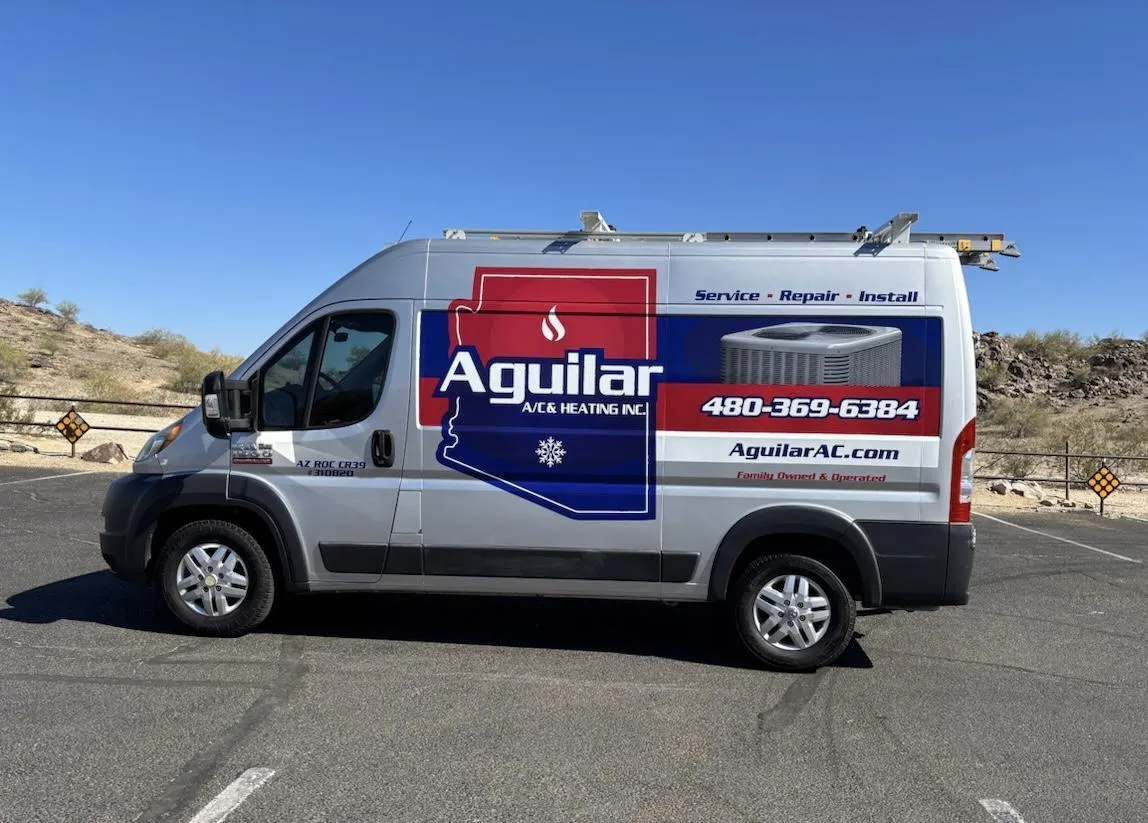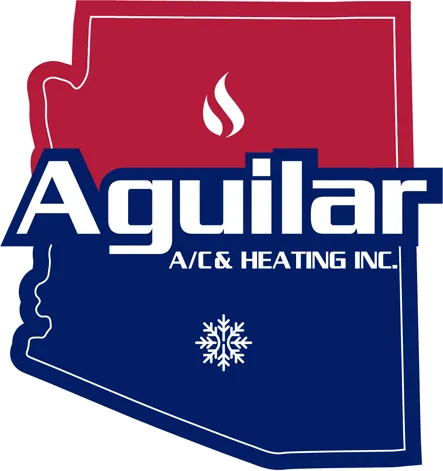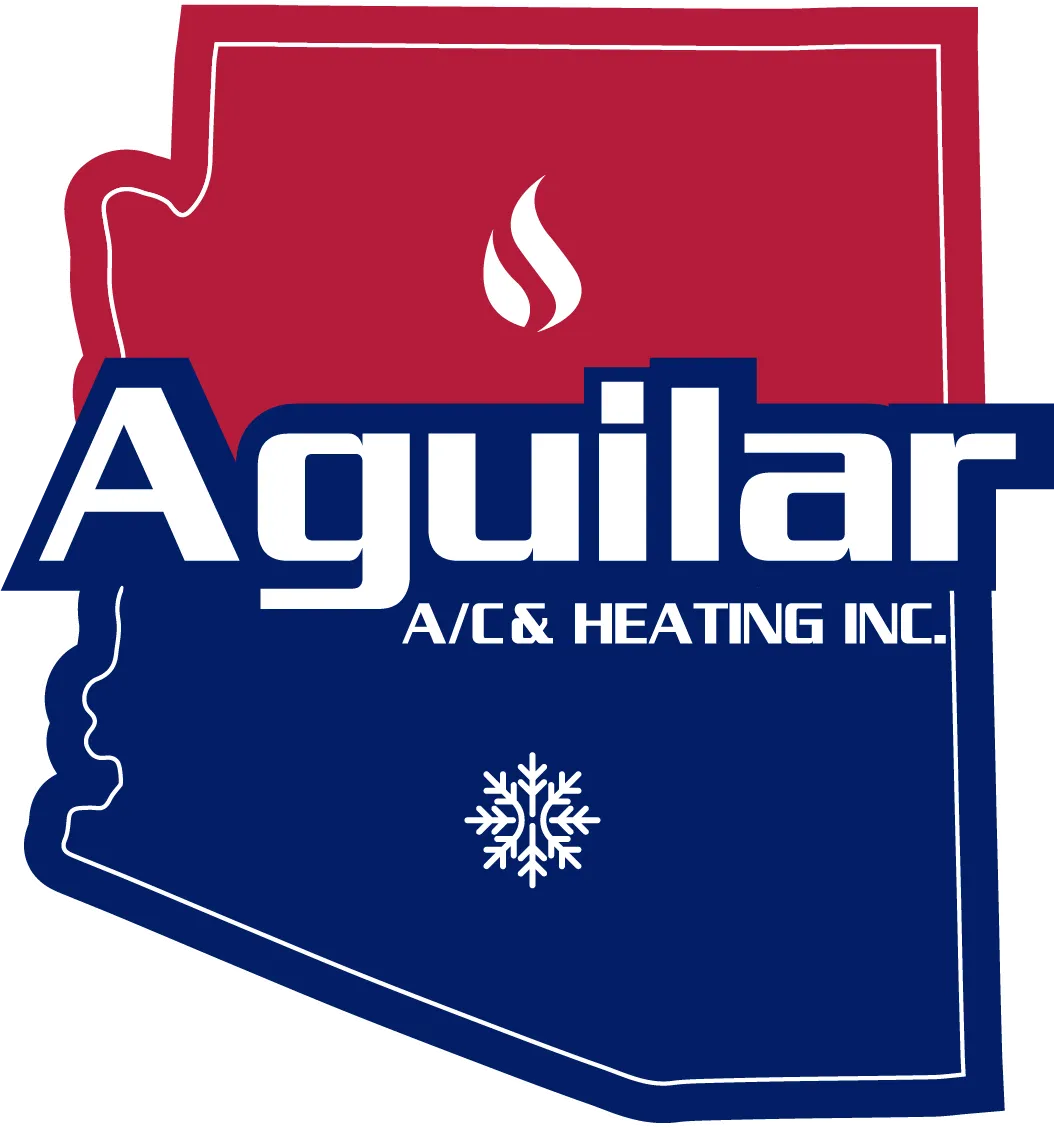Aguilar A/C & Heating
Blog

The Role of Duct Cleaning in Improving Indoor Air Quality
You dust your furniture, vacuum the floors, and keep windows closed to trap the cool air — yet somehow your home still feels dusty, stale, or makes you cough more than usual. Hidden behind the scenes, your ductwork may be circulating contaminants you can’t see.
Duct cleaning is one of the often-overlooked services that can make a big difference in indoor air quality (IAQ). In this post, we’ll explore how duct cleaning works, when and why it’s necessary (especially in desert climates like Phoenix), step-by-step guides, and common questions homeowners ask.
Why Duct Cleaning Matters for Indoor Air Quality
Your ductwork is like the circulatory system of your HVAC. Every time your system runs, air (and whatever’s in it) travels through that network of ducts, registers, and returns. If the ducts are dirty or clogged, they can become sources of contaminants instead of conduits of clean air.
Here’s how dirty ducts affect IAQ and your HVAC:
Accumulated Dust, Allergens & Debris
Over time, dust, pollen, pet dander, and other particles settle inside duct walls. They can re-enter your breathing space when the HVAC runs.Mold and Microbial Growth
In humid spots or due to condensation, mold or bacteria may grow inside duct surfaces. These can release spores or volatile compounds into your indoor air.Reduced Airflow & Imbalanced Pressure
Blockages restrict airflow. When air movement is disrupted, some rooms may get less air, stagnant zones develop, and the system works harder overall.Cross-Contamination
If ducts pass through attics, crawlspaces, or garages, they can pick up dust, insulation particles, or chemical pollutants and distribute them through living spaces.Increased Load on HVAC Components
Dirty ducts force your HVAC system to operate less efficiently. It uses more energy and accelerates wear on motors, fans, and coils.
In dusty climates like Phoenix, regular duct cleaning becomes especially valuable because airborne dust levels are higher, and the system recirculates more particulates than in cleaner climates. (Many local contractors advertise duct cleaning to improve air quality for Phoenix homes.)
When and How Duct Cleaning Should Be Done
Not every home needs annual duct cleaning, but in many cases, periodic cleaning is beneficial — especially when certain conditions are present. Here’s how to evaluate if it’s right for your home and how to do it well.
When You Should Schedule Duct Cleaning
Consider cleaning your ducts under any of these conditions:
You notice heavy dust buildup around vents or furniture, even after cleaning.
There is visible mold growth inside ducts or on surfaces of registers.
You smell musty, stale, or chemical odors that correlate with HVAC operation.
Someone in your home experiences unexplained allergies, respiratory issues, or worsening symptoms indoors.
You recently completed a renovation, adding drywall dust or other debris.
You’ve moved into a new home and don’t know the duct history.
You detect rodents, insects, or pests in duct systems.
Your system is older, and maintenance has been neglected.
Most experts recommend duct cleaning every 3 to 5 years under normal conditions, though in dusty or polluted areas (or with pets), more frequent cleaning may be needed.
How to Properly Clean Ducts (Professional Best Practices)
Cleaning ducts effectively involves several steps and proper equipment. Here’s what a trustworthy job should include:
Pre-inspection & assessment
A technician inspects duct interiors, registers, and returns, often using cameras or borescopes, to evaluate contamination levels and plan the procedure.Seal off the work area
Protect living areas by sealing off sections, using drop cloths, and containing dust.Use powerful negative pressure vacuum systems
Strong vacuum equipment (HEPA-filtered) draws contaminants out of ducts without blowing them into the room. This ensures dust and debris are removed safely.Agitate the duct surfaces
Mechanical brushes, air whips, or agitation tools loosen debris adhered to duct walls so the vacuum can remove it.Clean registers, grilles, and vents
Remove and hand-clean or vacuum all vents and grilles so reintroduction of contaminants is minimized.Clean related HVAC components
Technicians often clean the blower, coils, and air handler cabinet, since debris in the duct network often winds up there. Howard Air+2George Brazil HVAC+2Sanitize or apply antimicrobial treatment if needed
In mold-prone or bacterial growth cases, non-toxic antimicrobial sprays may be applied after cleaning. This must be done carefully and only where justified.Post-inspection & verification
After cleaning, a follow-up inspection (ideally with camera or visual check) ensures cleanliness goals are met, and the customer understands before/after condition.
Pros & Limitations: What Duct Cleaning Can and Can’t Do
What it can do:
Remove built-up dust, debris, and particles from duct interiors.
Reduce allergens and improving breathing comfort for sensitive occupants.
Restore airflow balance and reduce strain on the HVAC system.
Help with odors caused by duct-borne contaminants.
Support better HVAC efficiency and possibly lower energy consumption.
What it can’t guarantee:
It won’t address indoor pollution sources like smoking, cooking, off-gassing materials, or household chemicals.
It doesn’t prevent future dust accumulation — regular maintenance and filtration still matter.
Cleaning won’t fix structural problems (seals, leaks, insulation gaps) unless those are addressed separately.
If duct surfaces are already damaged or deteriorated, cleaning alone may not restore them fully.
FAQs
How often should I clean my air ducts?
Typically every 3 to 5 years under normal conditions. More frequent cleaning may be needed in dusty environments, after renovations, or in homes with allergy sensitivities.Does duct cleaning really improve indoor air quality?
Yes — when done properly, it helps remove dust, allergens, mold spores, and particulates from duct interiors, preventing them from circulating in your living space.Can I clean the ducts myself?
DIY duct cleaning is not recommended. Professionals have specialized tools (negative pressure vacuums, brushes, cameras) and training. Improper DIY cleaning can damage ducts or push contaminants deeper.Will cleaning ducts reduce my energy bills?
It can. Cleaner ducts and airflow reduce HVAC strain, helping the system run more efficiently. But savings depend on the degree of contamination and existing system condition.Does duct cleaning remove mold?
It can help remove mold growth from accessible duct surfaces, especially when combined with antimicrobial treatment, but extensive mold problems may require more remediation.
Conclusion
Duct cleaning is a valuable service when done correctly — especially in dusty, arid environments like Phoenix. It can meaningfully improve indoor air quality, reduce allergens, restore airflow balance, and lighten the burden on your HVAC system.
If your home shows signs of excess dust, odors, uneven airflow, or worsening indoor symptoms, it’s a good time to schedule a duct inspection and cleaning with a qualified Phoenix HVAC contractor. Clean ducts, better air — it’s one of the few behind-the-scenes services that can make a noticeable difference in what you breathe.
Our Services
Helpful Links
Contact Information
Phoenix, AZ 85042
Business Hours
Mon - Fri: 8:00 am - 4:30 pm
Sat & Sun: Closed
© 2025 All Rights Reserved | Aguilar A/C & Heating

